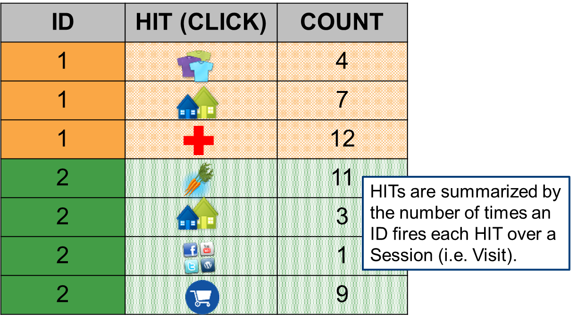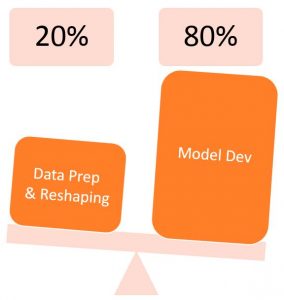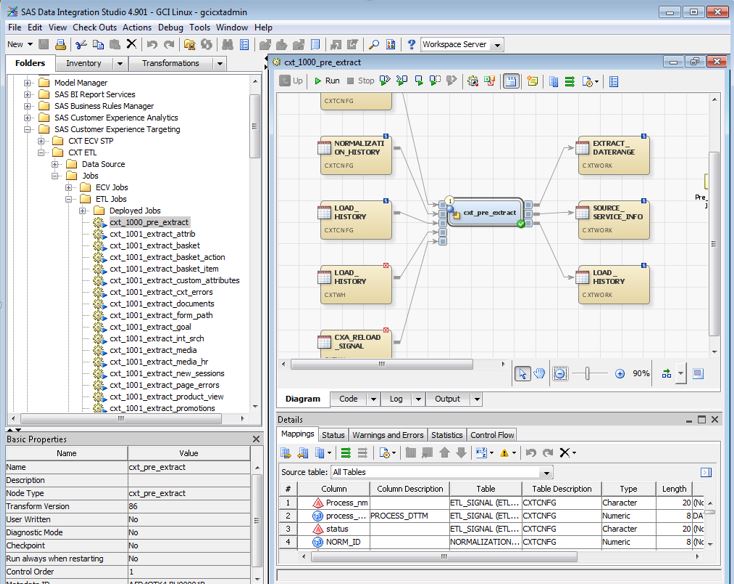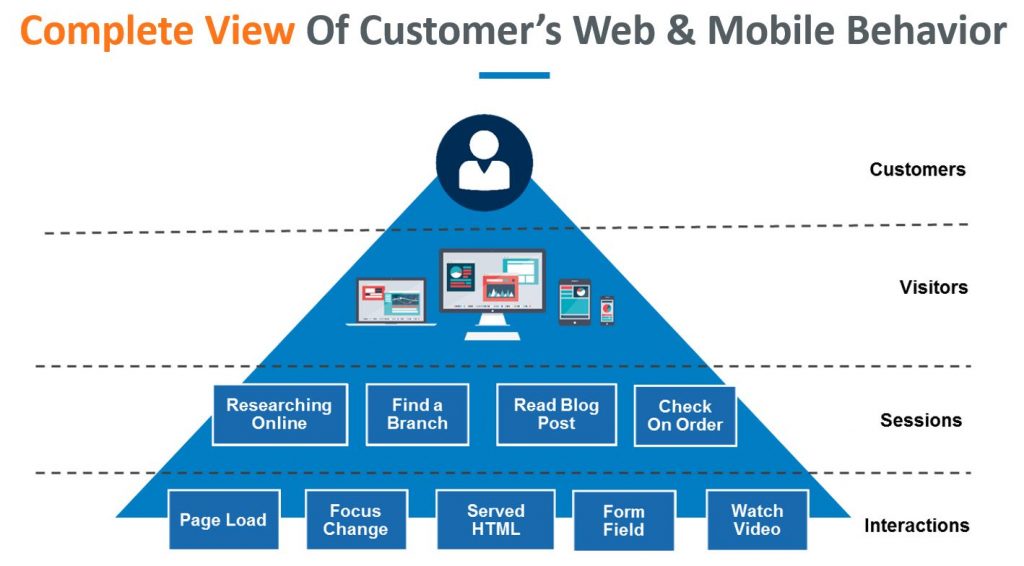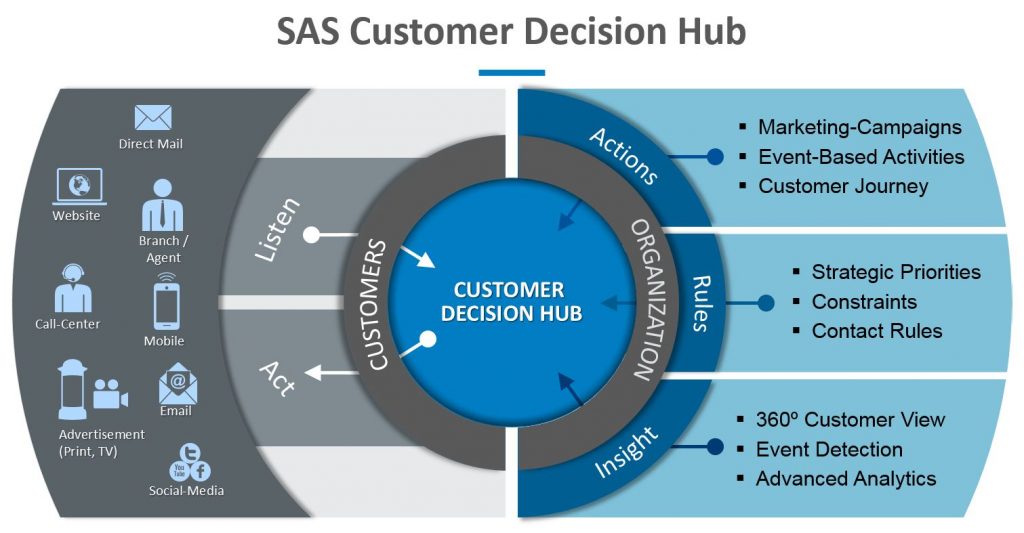In April, SAS 360 Discover was introduced at SAS Global Forum 2016. Since my career started at SAS over five years ago, I have been anticipating this important announcement. In my opinion, this is a major breakthrough for the space of digital intelligence.
In my first year working at SAS, I learned of research and development to address industry needs for digital marketers. Although technologies from Google, Adobe and others address web analytics with measurement reporting, there was a shortcoming.
Historically, web analytics has always had a huge data challenge to cope with since its inception. And when the use case for analysts is to run summary reports, clickstream data is normalized:
It nicely organizes raw clickstream into small, relevant data for reporting. However, this approach presents challenges when performing customer-centric analysis. Why? Holistic customer analysis requires the collection and normalization of digital data at an individual level. This is one of the most important value props of SAS 360 Discover.
Multi-source data stitching and predictive analytics require a data collection methodology that summarizes clickstream:
The data is prepared to contextualize all click activity across a customer's digital journey in one table row, including a primary key to map to all visits across browsers and devices. The data table view shifts from being tall and thin to short and wide. The beauty of this is it enables sophisticated analysis to prioritize what is important, and what isn't. This concept of data collection and management is considered a best practice for advanced customer analytics.
How many marketers do you know who wake up in the morning and claim they can't wait to hear about how analysts are spending 80 percent of their time preparing raw web behavior data, rather than focusing on analysis and actionable insights? None, you say? Exactly! Wouldn't you rather hear your marketing analysts spend their time doing this?
I have always appreciated SAS for what it can do with structured, semi-structured, and unstructured information, but there has always been one dependency – where do I point SAS to obtain the originating data? SAS 360 Discover eliminates this requirement, and provides data collection mechanisms for your brand's website(s) and mobile apps.
In addition, the raw semi-structured data streams SAS natively collects are run through a pre-built relational data model using SAS Data Management for various forms of contextualization that stretch far beyond traditional web analytic use cases.
The output of this data model schema summarizes all digital visitor behavior at this level of detail:
- Customers.
- Anonymous visitors.
- Sessions (or visits).
- Interactions (or clicks/hits).
The data model schema will allow for additional configurations and introduction of other digital data sources to accommodate your organization's evolving needs. More importantly, the benefits of the output are profound, and listed below is a summary of SAS 360 Discover benefits:
- Digital data normalization to support online and offline data stitching of customers.
- When offline data is residing in your organization's data warehouse, information is available at the customer level (not a click or hit level). That's a problem when you want to link it with web or app data. The amount of time analysts spend reshaping raw HIT extracts from their web analytics solution is astonishing, and quite difficult. Customer analysis requires online/offline data stitching, and overcoming this obstacle was a problem SAS set out to solve.
- Measurement reporting and visualization of customers and segments.
- The reporting remains critical as an entry stage for analytics. SAS believes there should be no limit to how many reports and dashboards can be produced to meet business objectives. In other words, unlimited ad hoc reports using SAS Visual Analytics, which is the analysis tool that is packaged with SAS 360 Discover.
- Predictive analytics, machine learning, and data science of customers and anonymous traffic.
- When it comes to customer analytics, there is only one undisputed leader. You can use any of the SAS analytic technologies with SAS 360 Discover.
- Fueling the SAS customer decision hub
- Brands gain a competitive edge if they stop perceiving customer engagement as a series of discrete interactions and instead see it as customers do: a set of interrelated interactions that, when combined, make up the customer experience. By folding in all known customer level information into a common hub, SAS can analyze, score and take intelligent, contextual actions across channels.
The path to digital intelligence from traditional web analytics covers the diversity of data, advanced analytic techniques, and injection of prescriptive insights to support decision-making and marketing orchestration. Digital intelligence is a transformation — making it a competitive differentiator. It aims to convert brands to become:
- Customer-centric rather than channel-centric
- Focused on enterprise goals as opposed to departmental
- Enabled for audience activation and optimization
- Analytical workhorses
I suspect you would love to see demonstrations of the data that SAS 360 Discover collects from websites and mobile apps in action:
In addition, here is the on-demand video of the SAS Global Forum 2016 keynote presentation of SAS Customer Intelligence 360.
As a marketing analyst at heart, it is extremely gratifying to share my excitement for SAS 360 Discover. The time for predictive customer marketing in the digital ecosystem is here, and the 800-pound gorilla in advanced analytics has just unleashed your new secret weapon.
